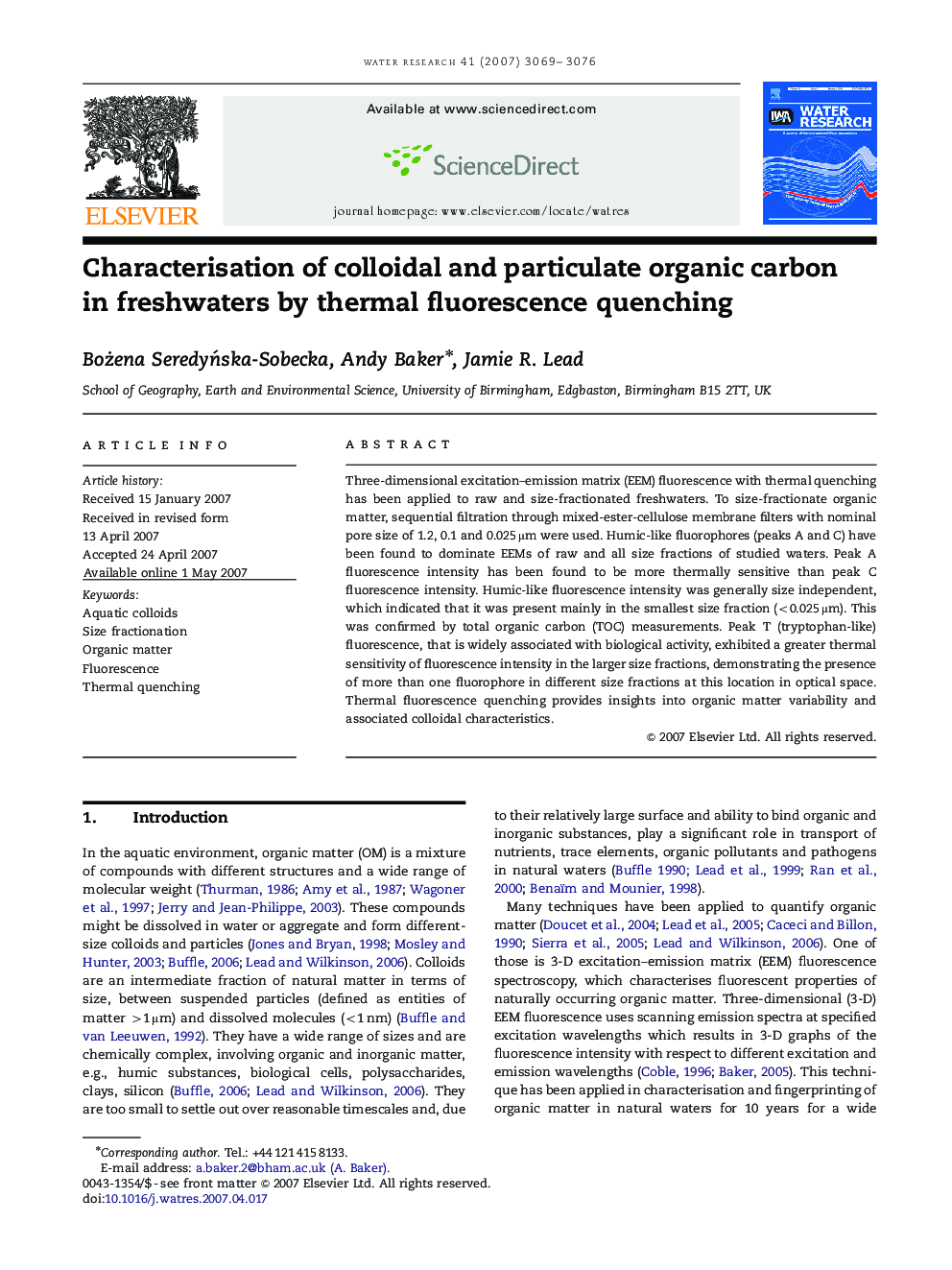| Article ID | Journal | Published Year | Pages | File Type |
|---|---|---|---|---|
| 4483902 | Water Research | 2007 | 8 Pages |
Three-dimensional excitation–emission matrix (EEM) fluorescence with thermal quenching has been applied to raw and size-fractionated freshwaters. To size-fractionate organic matter, sequential filtration through mixed-ester-cellulose membrane filters with nominal pore size of 1.2, 0.1 and 0.025 μm were used. Humic-like fluorophores (peaks A and C) have been found to dominate EEMs of raw and all size fractions of studied waters. Peak A fluorescence intensity has been found to be more thermally sensitive than peak C fluorescence intensity. Humic-like fluorescence intensity was generally size independent, which indicated that it was present mainly in the smallest size fraction (<0.025 μm). This was confirmed by total organic carbon (TOC) measurements. Peak T (tryptophan-like) fluorescence, that is widely associated with biological activity, exhibited a greater thermal sensitivity of fluorescence intensity in the larger size fractions, demonstrating the presence of more than one fluorophore in different size fractions at this location in optical space. Thermal fluorescence quenching provides insights into organic matter variability and associated colloidal characteristics.
